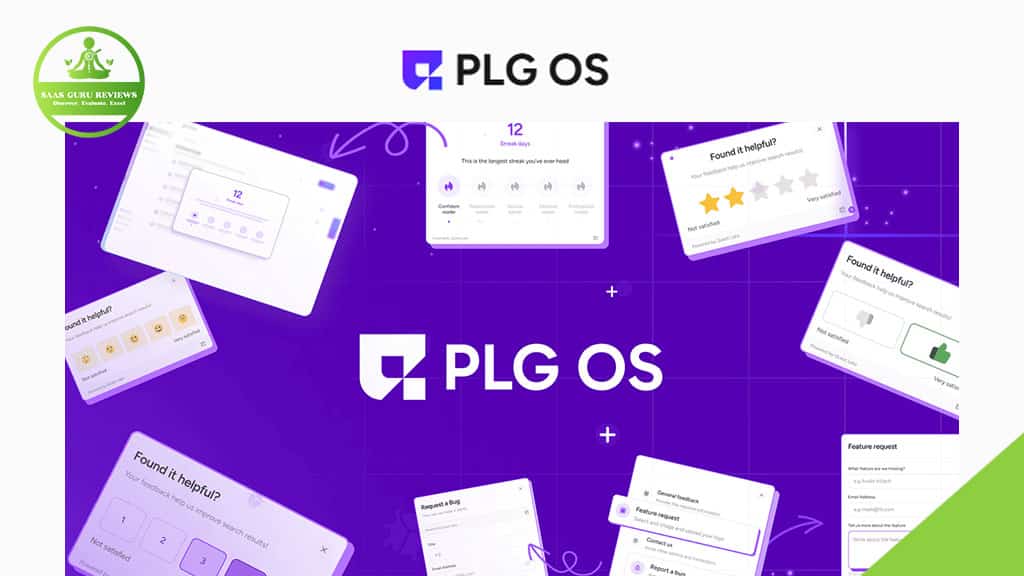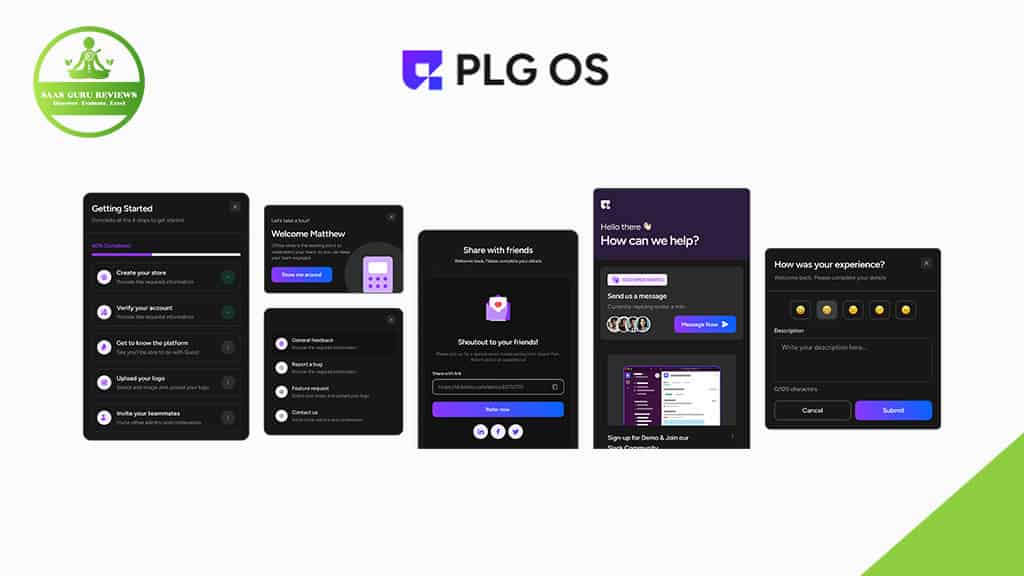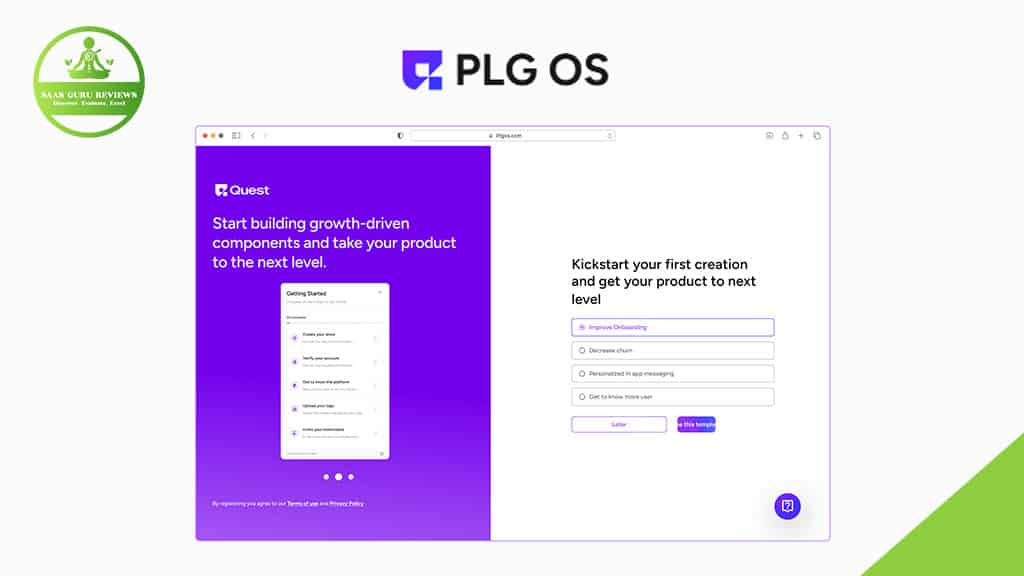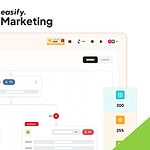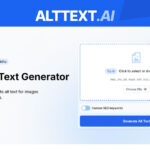In today’s competitive SaaS landscape, product-led growth strategies have become essential for businesses looking to scale efficiently. PLG OS stands at the forefront of this revolution, offering a comprehensive platform designed to optimize user experiences and drive customer acquisition through the product itself. This article explores how PLG OS is transforming how companies implement product-led growth strategies, its key features, and why it’s becoming an indispensable tool for forward-thinking businesses in 2025. Whether you’re a startup founder, product manager, or growth specialist, understanding PLG OS’s capabilities will help you make informed decisions about your product-led growth technology stack.
What is PLG OS and How It’s Reshaping Product-Led Growth in 2025
PLG OS is a comprehensive platform developed to enable companies to build an operating system for product-led growth. Founded by Shubham Nigam, PLG OS by Questera aims to help businesses activate more users through personalized experiences throughout the customer journey. The domain plgos.com was purchased in 2024, making it a relatively new entrant in the market. According to SEO tools like Seodity, the website currently has modest traffic of approximately 0.06, which is expected for a new platform still establishing its market presence.
PLG OS integrates various tools and features that allow companies to create, deploy, and optimize user experiences within their products. By focusing on the entire user journey, from onboarding to retention, the platform enables businesses to implement product-led strategies effectively. The platform’s AI capabilities provide insights into user behavior, allowing for real-time adjustments and personalization that can significantly impact conversion rates and customer satisfaction.
In the competitive landscape of product-led growth tools, PLG OS positions itself as an all-in-one solution that addresses the gaps left by other platforms like DevRev and Intercom. Its comprehensive approach to product-led growth makes it particularly valuable for SaaS companies looking to scale through their product experience.
The Core Features of PLG OS for Developers and Product Teams
PLG OS provides developers with powerful tools to ship UX features quickly and efficiently. The platform’s developer-friendly interface allows technical teams to implement complex user experience elements without extensive coding. This capability enables developers to focus on creating value rather than wrestling with implementation details.
The platform includes APIs and SDKs that make integration with existing tech stacks seamless. Developers can leverage these tools to build custom solutions that align with their product’s unique requirements. The flexibility of PLG OS’s architecture allows for both out-of-the-box implementations and highly customized deployments, making it suitable for companies at various stages of technical maturity.
By providing a robust foundation for building user experiences, PLG OS empowers developers to create dynamic user flows with rich data insights that can adapt to individual user needs. This level of personalization was previously difficult to achieve without significant development resources, but PLG OS makes it accessible to teams of all sizes.
How PLG OS Helps Companies Ship UX Features Faster
One of the standout capabilities of PLG OS is its ability to accelerate the development and deployment of user experience features across all stages of the user journey. The platform provides pre-built components and templates that teams can customize and implement quickly, reducing the time from concept to production.
PLG OS includes tools for prototyping, testing, and iterating on user experiences, allowing product teams to validate their ideas before full deployment. This approach minimizes the risk of investing resources in features that don’t resonate with users. The platform’s real-time analytics provide immediate feedback on how users interact with new features, enabling continuous improvement.
By streamlining the process of building and shipping powerful user experiences, PLG OS helps companies stay competitive in fast-moving markets. The ability to quickly respond to user needs and market trends is crucial for product-led companies, and PLG OS provides the infrastructure to make this agility possible.
Leveraging AI in Product-Led Growth with PLG OS
Artificial intelligence is at the heart of PLG OS’s value proposition. The platform uses AI to analyze user behavior, identify patterns, and generate actionable insights that can inform product decisions. This capability allows companies to understand their users on a deeper level and create more personalized experiences.
PLG OS’s AI features include predictive analytics that can forecast user behavior, allowing companies to proactively address potential issues before they impact retention. The platform also uses machine learning to optimize user flows automatically, continuously improving conversion rates without manual intervention.
The AI capabilities extend to content personalization, enabling companies to deliver the right messages to users based on their behavior, preferences, and stage in the customer journey. This level of personalization can significantly improve engagement and drive product adoption by integrating relevant content at the right moments.
PLG OS vs. DevRev: A Comprehensive Comparison
When comparing PLG OS to competitors like DevRev, several key differences emerge. While DevRev focuses primarily on connecting product development with customer support and revenue, PLG OS takes a more holistic approach to product-led growth, encompassing the entire user journey from acquisition to advocacy.
DevRev has established itself as a player in the developer-centric CRM space, but PLG OS offers more specialized tools for creating and optimizing in-app experiences. The platforms differ in their approach to user data as well, with PLG OS providing more granular insights into how users interact with specific features and flows.
In terms of integration capabilities, both platforms offer extensive options, but PLG OS’s focus on the product experience itself makes it particularly valuable for companies that want to make their product the primary growth driver. While DevRev connects various aspects of the business, PLG OS concentrates on maximizing the effectiveness of the product as a growth engine.
You can explore more about DevRev on their website and compare it with PLG OS’s offerings at plgos.com. PLG OS’s pricing information is available on their dedicated pricing page, which outlines various tiers designed for different company sizes and needs.
Activating More Users Through Personalized Onboarding Experiences
User onboarding is a critical phase in the customer journey, and PLG OS provides specialized tools to optimize this process. The platform enables companies to create personalized onboarding experiences that adapt to each user’s needs, goals, and behavior, increasing the likelihood of activation and long-term engagement.
PLG OS’s onboarding capabilities include interactive tutorials, progress tracking, and contextual guidance that helps users understand the value of the product quickly. By focusing on the “aha moment” – when users first experience the product’s core value – PLG OS helps companies reduce time-to-value and improve conversion rates from free to paid users.
The platform also enables segmentation of users during onboarding, allowing for different paths based on user characteristics or goals. This capability ensures that users receive relevant guidance and are directed toward the features that will be most valuable to them, enhancing the overall onboarding experience and increasing the chances of successful activation.
Enhancing Customer Support Through Real-Time Insights
PLG OS integrates customer support capabilities with product usage data, providing support teams with real-time insights into user behavior and issues. This integration allows support representatives to understand the context of user problems and provide more effective assistance.
The platform includes tools for in-app support, such as chatbots and help centers, that can be personalized based on the user’s journey and current activities. These tools reduce the friction in seeking help and enable users to resolve issues without leaving the product, improving the overall user experience.
By connecting support interactions with product analytics, PLG OS helps companies identify common issues and prioritize improvements that will have the greatest impact on user satisfaction and retention. This data-driven approach to customer support transforms it from a cost center to a strategic asset in the product-led growth model.
For community support, PLG OS users can connect through their Facebook group or Discord channel, where they can share best practices and learn from other users’ experiences. The company also maintains a YouTube account with tutorials and case studies that showcase successful implementations.
Competitive Analysis: How PLG OS Stacks Up Against Other Growth Platforms
In the crowded market of growth platforms, PLG OS distinguishes itself through its comprehensive focus on product-led strategies. While tools like Intercom excel at customer communication and others specialize in specific aspects of the user journey, PLG OS provides an end-to-end solution for implementing product-led growth.
Compared to competitors, PLG OS offers more extensive capabilities for creating and optimizing in-product experiences. Its integration of user analytics, experience design, and deployment tools in a single platform reduces the complexity of implementing product-led strategies and provides a more cohesive view of the user journey.
PLG OS also differentiates itself through its focus on actionable insights rather than just data collection. The platform doesn’t just tell companies what users are doing; it provides recommendations on how to improve experiences based on that behavior, making it easier to translate data into meaningful improvements.
Building User Loyalty Through Gamification and Personalization
PLG OS includes powerful tools for implementing gamification strategies that can increase user engagement and loyalty. The platform allows companies to create achievement systems, progress indicators, and reward mechanisms that motivate users to explore more features and deepen their usage of the product.
Beyond traditional gamification, PLG OS enables sophisticated personalization that adapts the product experience to individual user preferences and behaviors. This capability creates a sense of ownership and connection that can significantly enhance user loyalty and reduce churn.
The platform’s cohort analysis tools help companies understand how different user segments respond to gamification and personalization strategies, allowing for continuous refinement of these approaches. By identifying what works for specific user groups, companies can create more effective loyalty programs that drive long-term retention.
Deploying PLG OS: Implementation Strategies and Best Practices
Implementing PLG OS effectively requires a strategic approach that aligns with company goals and user needs. The platform offers various deployment options, from gradual implementation focusing on specific user journeys to comprehensive rollouts that transform the entire product experience.
Successful deployment typically begins with identifying key metrics and user journeys that will benefit most from optimization. This focused approach allows companies to demonstrate value quickly and build internal support for broader implementation. PLG OS’s modular architecture supports this incremental approach, allowing companies to add capabilities as needed.
Integration with existing systems is a critical aspect of PLG OS deployment. The platform provides APIs and pre-built connectors for popular tools like CRMs, marketing automation platforms, and analytics solutions, ensuring that PLG OS becomes a seamless part of the company’s technology ecosystem rather than a siloed tool.
The Future of Product-Led Growth: PLG OS in 2025 and Beyond
As we look toward 2025 and beyond, PLG OS is positioned to play a significant role in the evolution of product-led growth strategies. The platform’s roadmap includes enhanced AI capabilities that will provide even deeper insights into user sentiment and behavior, allowing for more sophisticated personalization and automation.
The future of PLG OS also includes expanded integration capabilities, making it easier to connect with emerging technologies and platforms. This flexibility will ensure that companies can adapt their product-led strategies to changing market conditions and user expectations without significant technical overhead.
Perhaps most importantly, PLG OS is evolving to support the full-stack approach to product-led growth, where every aspect of the business – from marketing to sales to customer success – is aligned around the product experience. This holistic approach represents the future of SaaS business models, and PLG OS is building the infrastructure to make it possible.
Key Takeaways About PLG OS and Product-Led Growth
- PLG OS is a comprehensive platform for implementing product-led growth strategies, founded by Shubham Nigam and launched in 2024.
- The platform enables companies to create personalized user experiences across all stages of the customer journey, from onboarding to loyalty.
- PLG OS provides developers with tools to ship UX features faster and more efficiently, reducing time-to-market for new capabilities.
- AI capabilities are central to PLG OS, providing insights and automation that enhance personalization and optimization.
- Compared to competitors like DevRev, PLG OS offers a more holistic approach to product-led growth with specialized tools for in-app experiences.
- The platform excels at user onboarding, allowing companies to activate more users through personalized experiences.
- PLG OS integrates customer support with product usage data, providing real-time insights that improve support effectiveness.
- Gamification and personalization features help build user loyalty and reduce churn.
- Implementation strategies for PLG OS can be incremental, focusing on high-impact user journeys first.
- Looking toward 2025, PLG OS is evolving to support a full-stack approach to product-led growth with enhanced AI capabilities and broader integration options.
By leveraging PLG OS, companies can transform their approach to growth, making their product the primary driver of acquisition, conversion, and retention. As product-led strategies continue to dominate the SaaS landscape, platforms like PLG OS will become increasingly essential for companies looking to compete and succeed in this new paradigm

